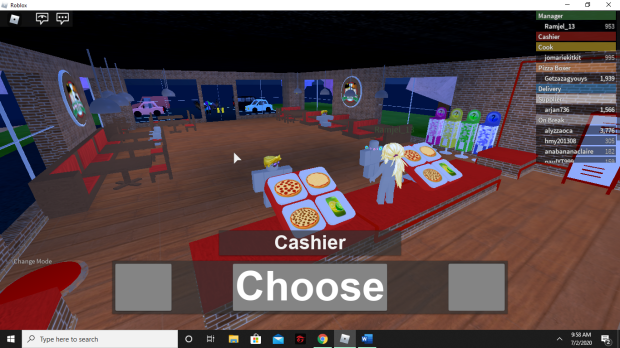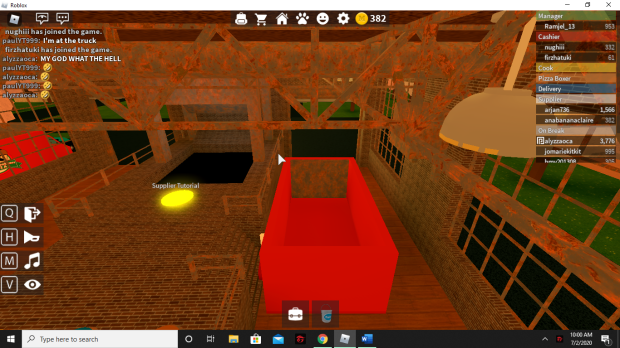Yuri Zaitsev mentioned in his talk entitled “Game Principle To Design Products For Fun” that there are several types of fun in a game. One of them is fellowship- the sense of community in a game. In other words, players working together towards the same goal.
I have been playing Working at a Pizza Place for an hour or less for a few days now. In this game, there are roles such as the manager, cashier, cook, pizza boxer, delivery, and supplier. Each role has a specific job. Any player can choose and change their role whenever they wanted.

You will be playing this game in real-time with other 11 players or less. Sometimes, some players will not do their jobs and just be idle but, thank Heavens, some players do their jobs. Altogether, everyone works well.

The main reason why I am so hooked at this game is that I feel that I have a purpose. In the game, everyone’s job is crucial similar to a real-life pizza place. The game makes you feel that what you are doing has a purpose because you are not working only for your gain. Other players in the server rely on you as well so that they could properly do their jobs too.
Fellowship is the type of fun that the designer of Working at a Pizza Place has incorporated in the game. I am someone who volunteers especially if it is something related to community building. Probably why I find WAAPP absolutely fun.
Moreover, once I had learned the different types of fun in a game, I began to look for examples in the real-world that incorporate the various types of fun.
But before that, here are the other types of fun that I learned from Yuri Zaitsev:
● Narrative – has a story to tell
● Sensation – uses various senses
● Fantasy – turns on your imagination
● Challenge – learning a new skill
● Discovery – discovering something new
● Expression
● Abnegation – a sense of peace or real one
An example is the Adventure Series™.

Seeing first-hand how a child reacted to seeing his work, the MRI Scanner, like one big scary machine, prompted designer Doug Dietz to design the MRI suit in a human-centered way.
The Adventure Series™ incorporated the fantasy and narrative types of fun in its design. Kids enter the room and spend their session inside like they are the main character of a fantasy book. Operators follow a script that they need to narrate to pediatric patients throughout the session. Fantastical elements are painted from the walls, floor, ceiling, and even the MRI Scanner itself. Doug Dietz and his team were able to make the MRI session for young patients fun and memorable instead of something dreadful and traumatizing to some.
80% of pediatric patients sedated before to only 2 patients after the first year of Adventure Series™.